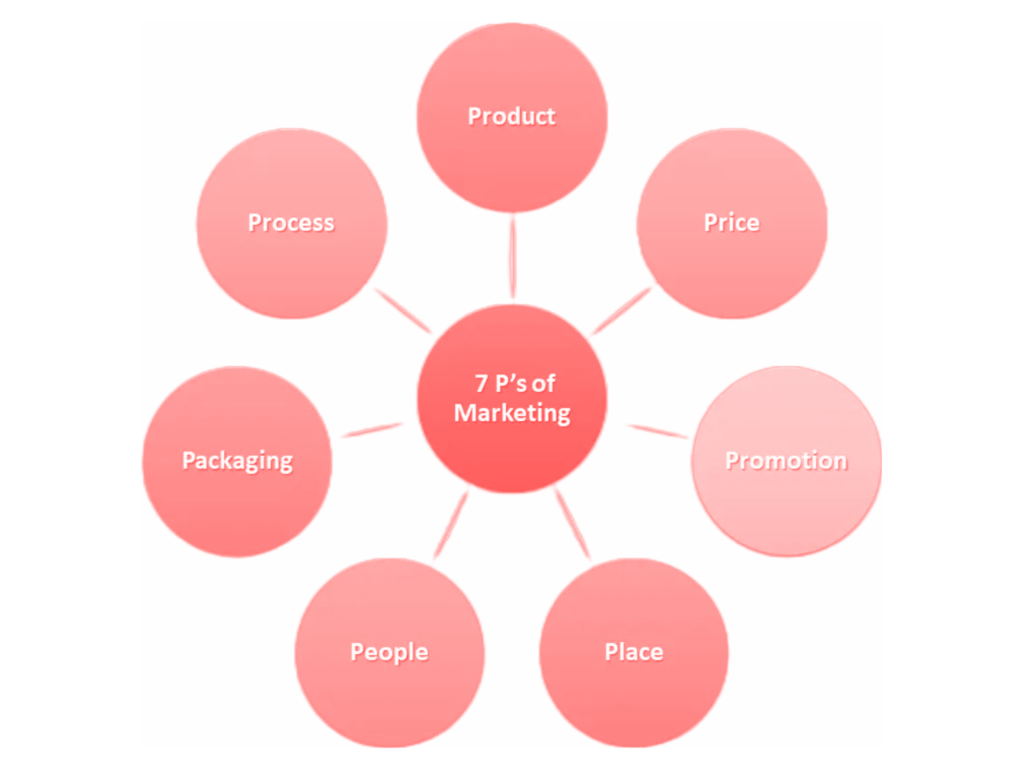We keep on rolling...
The right marketing strategy
What is a marketing strategy? What is a marketing strategy?
A marketing strategy is a long-term plan to achieve a company's goals by understanding customers' needs and creating a clear and sustainable competitive advantage. It encompasses everything from identifying who your customers are to deciding which channels to use to reach them.
With a marketing strategy, you can determine how your company positions itself in the market, what types of products you produce, which strategic partners you attract and what kind of advertising and sales promotion you do.
A marketing plan is essential for the success of any business. Read on to learn how to develop a successful marketing strategy for your business.
The most important marketing principles The most important marketing principles

Marketing is more than just advertising and sales promotion - it's about connecting with the customer.

A marketing strategy sets the direction for all your product and marketing-related activities.

A marketing strategy helps you keep all your activities on track.

Developing a marketing strategy involves setting goals.
-Digital Marketing VS. Performance Marketing
Understanding marketing
Before we delve into the details of marketing strategy, you need to know exactly what marketing is - and what it is not.
The Exploration of the Market, the Development from product plans, the Determination from Marketing initiatives and the Attention the 7 Ps.
What is marketing?
Marketing is about connecting your business with potential customers and connecting those customers with your products.
It's about understanding customer needs, translating those needs into products and services, packaging and pricing those products and services, and then convincing customers that they need to buy those products and services.
What marketing is not?
Marketing is not just about advertising, public relations or creating a website or email campaign. It's also about everything that precedes these activities to support both your customers and your sales team.
Ideally, it controls your entire business and determines what products you make and how you distribute them.
Create advantages
What is your company doing to build a relative advantage over competitors in the minds of your target customers ?
Building hurdles
What barriers do you put up for your competitors to protect your advantage in the long term?
Do good and talk about it
How do you communicate your measures and USPs to your target group?
What is part of a marketing strategy? What is part of a marketing strategy?
Essentially, a marketing strategy sets the general direction - but not the specific details - for a variety of marketing-related activities. Ideally, your marketing strategy should help you define the following goals for your business:
- Target audience
- Value proposition
- Product mix
- Brand message
- Sales promotion initiatives
- Content marketing
Why is a marketing strategy important? Why is a marketing strategy important?
Preparing - and following - a marketing strategy is essential to set the direction not only for your marketing-related activities, but also for your entire business. Your marketing strategy helps you stay in tune with your customer base, develop the right products for them and determine how to communicate information about those products.
Without a defined strategy, you will not know who your target groups and customers are, you will not develop the right products and you will waste money marketing them.
In short, a defined marketing plan makes you more successful. According to a survey, companies that have a documented marketing strategy are 313% more likely to succeed than those that do not.
How to develop a successful marketing strategy? How to develop a successful marketing strategy?
There are several steps you need to take to develop a solid marketing strategy for your business.
Your company's vision and goals are the driving factors for your marketing strategy. These overarching goals help determine your marketing objectives that your marketing strategy serves.
Your marketing objectives build on your company's goals and measures. You might set a goal to reach a certain market share, dominate a certain channel or reach a certain percentage of a certain type of consumer. Your goals should be achievable and measurable.
The goals you set will help you define the target market. To do this, you need to familiarise yourself with the customers in this market, which requires a certain amount of market research and analysis. You need to identify the following information about the target market and its customers:
- Market size and growth potential
- Market trends
- Competitor
- Geographical and demographic characteristics
- Customer behaviour
When developing your marketing strategy, you should focus on the traditional 7 Ps of marketing:
- Product - how you satisfy customer needs
- Price - how much are customers willing to pay for your product?
- Promotion - which channels you use to inform customers about your product
- Place - where you sell your product
- People - people who help sell your product to customers
- Packaging - how you present your product to the customer
- Process - how you deliver your product to customers
If you know your target customers, you can determine which products best meet their needs. When you know what a customer wants, you can develop the right product for that customer.
Of course, the development of the product is not the responsibility of the marketing department, nor is the manufacturing of the product. But marketing should play an important and vocal role in defining the product features, pricing and packaging, based on customer needs and metrics.
Identify the most important advantages Identify the most important advantages
Experienced marketers know that new customers make decisions based not on the features of a new product, but on the benefits the product offers them. It is important to identify the key benefits of the products you develop - how the product best meets the customer's wants or needs.
Unsuccessful products often have attractive features, but if those features don't translate into benefits, customers simply don't care. It's not about "if you build it, they will come", it's about meeting the needs of your customers.
Elaborate your positioning and message Elaborate your positioning and message
Product positioning should be based on the benefits of a product and how the product meets the needs of the target group. You need to understand exactly what your customers value and then position your product accordingly.
This continues throughout the measures of communication around the product. The positioning of the product may be that it is best suited to meet a particular need - the messaging communicates this positioning in a clear, concise and attention-grabbing way.
Define your marketing mix Define your marketing mix
Finally, your marketing strategy should define how you will reach your target audience - which channels and activities you will include in your marketing mix. This can include traditional channels such as print, radio and television as well as digital channels, social media and mobile apps.



